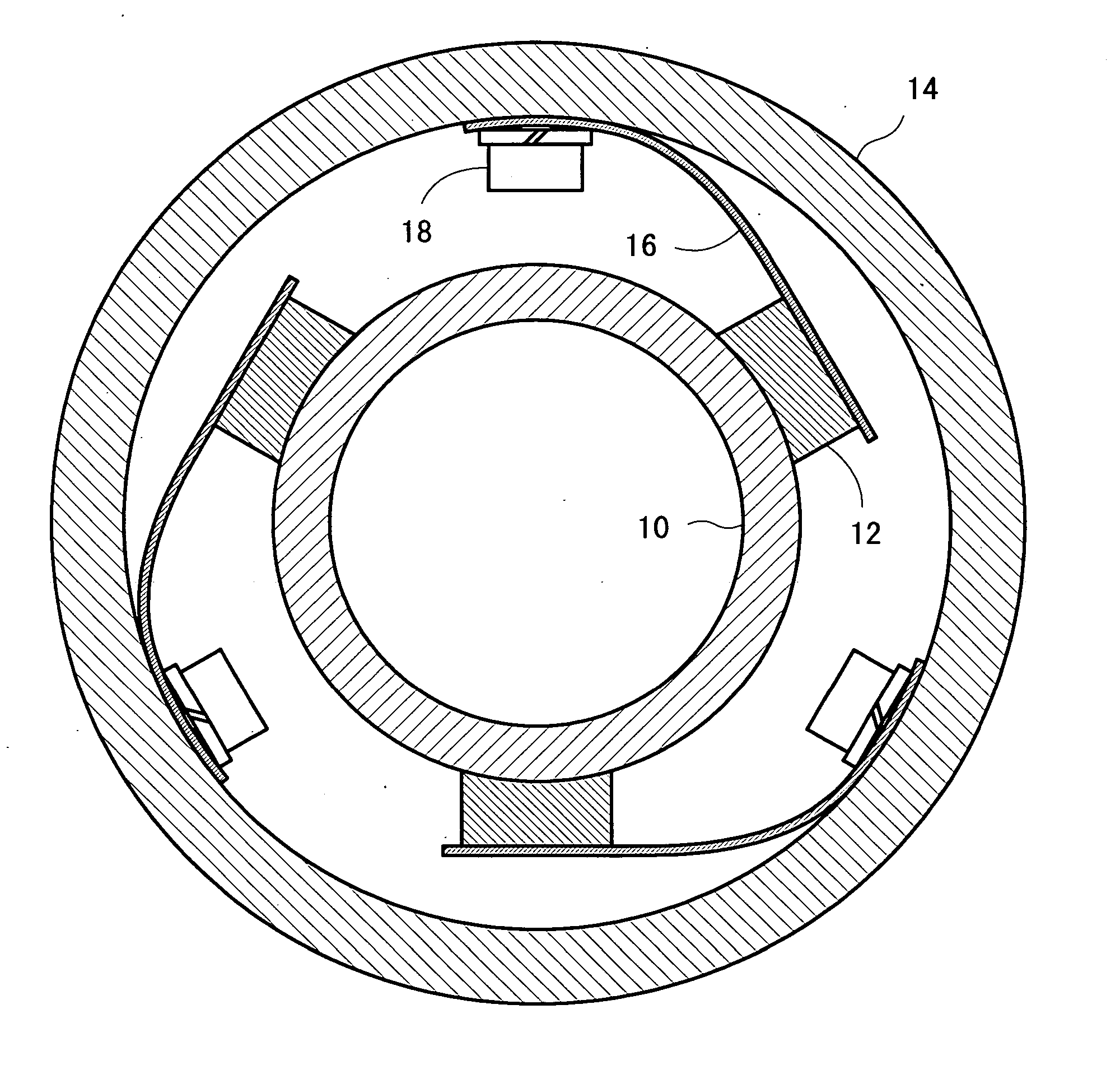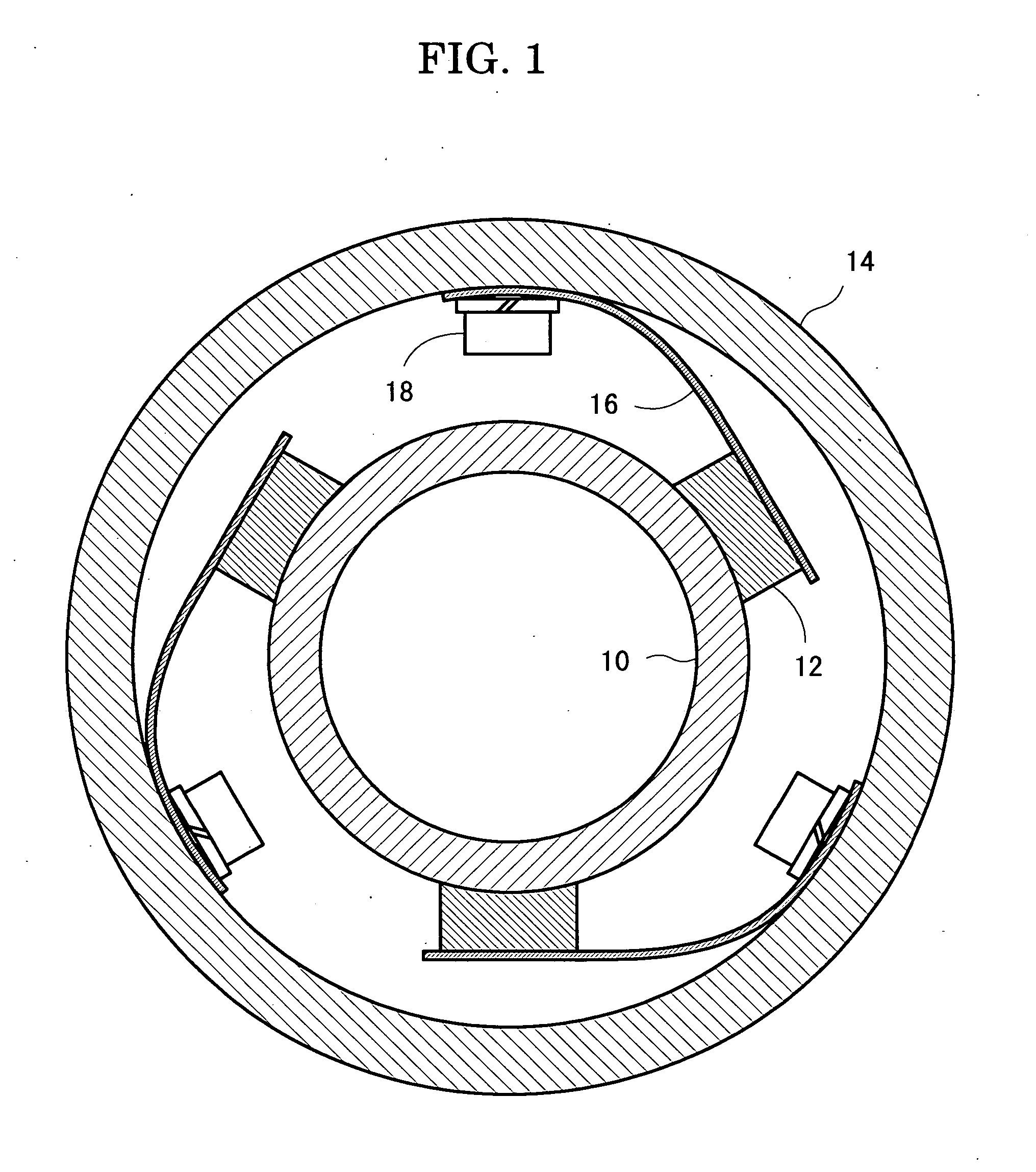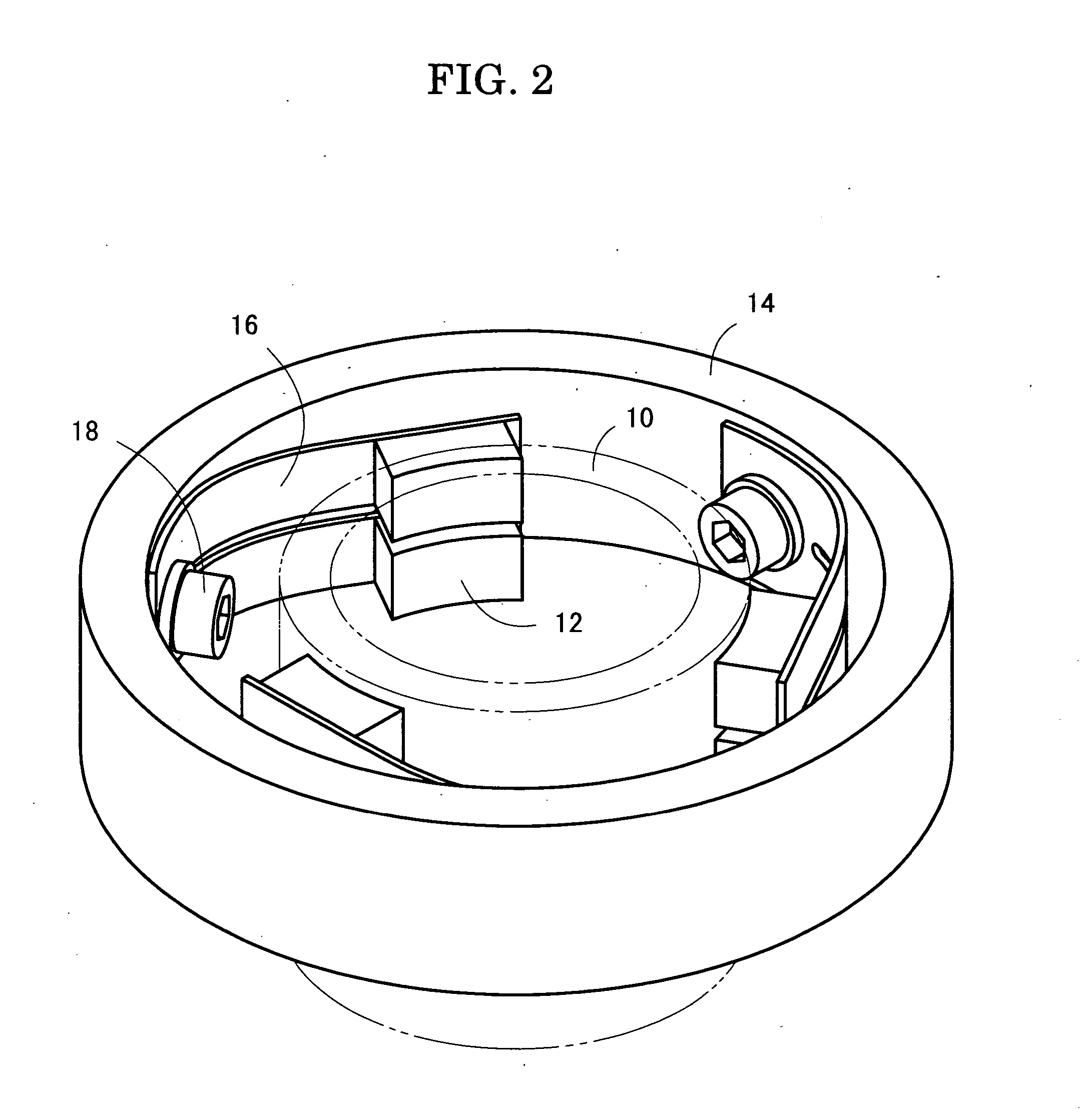Rotary current-collecting device and rotating anode X-ray tube
a current collection and rotary technology, applied in the direction of x-ray tubes, x-ray tube details, acyclic motors, etc., can solve the problems of poor self-lubricating properties of glassy carbon and unsuitable mechanical sliding parts, and achieve low friction coefficient, less dust generation, and low electrical resistance
- Summary
- Abstract
- Description
- Claims
- Application Information
AI Technical Summary
Benefits of technology
Problems solved by technology
Method used
Image
Examples
Embodiment Construction
[0017] Embodiments of the present invention will now be described with reference to the drawings. First, the shape of a rotary current-collecting device will be described. Referring to FIG. 1, a rotary current-collecting device has a slip ring 10 and brushes 12. The slip ring 10 has a cylindrical shape with an outside diameter of 20 mm. The outer peripheral surface of the slip ring 10 is a sliding-contact surface which is to come into sliding contact with the brushes 12. A brush-holding ring 14 has a cylindrical shape larger than the slip ring 10. The inner surface of the brush-holding ring 14 supports three brush-holding springs 16 in an equally spaced arrangement. The root of the brush-holding spring 16 is fixed to the brush-holding ring 14 by screws 18. Referring to FIG. 2, the brush-holding spring 16 has a tip end which is divided into two parts each of which fixedly supports the brush 12. The brushes 12 are pushed against the outer peripheral surface of the slip ring 10 under t...
PUM
 Login to View More
Login to View More Abstract
Description
Claims
Application Information
 Login to View More
Login to View More - R&D
- Intellectual Property
- Life Sciences
- Materials
- Tech Scout
- Unparalleled Data Quality
- Higher Quality Content
- 60% Fewer Hallucinations
Browse by: Latest US Patents, China's latest patents, Technical Efficacy Thesaurus, Application Domain, Technology Topic, Popular Technical Reports.
© 2025 PatSnap. All rights reserved.Legal|Privacy policy|Modern Slavery Act Transparency Statement|Sitemap|About US| Contact US: help@patsnap.com



